
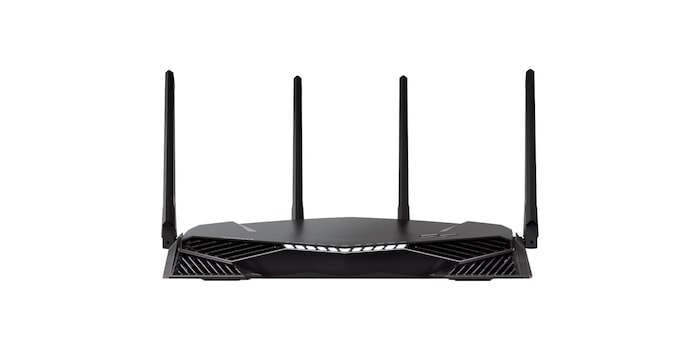
The Lambo of gaming routers: Netgear XR500 Review
For me, the Netgear XR500 is a gaming router straight out of a picture book. Not only does it look sleek, but it is also a considerable size. Its shape is strongly reminiscent of a Lamborghini. So I'm wondering whether it's just as powerful as the super sports car?
In addition to the router, not much is included in the packaging; a LAN cable, antennas, software CD, manuals and a power supply unit. But that's all you need. There is enough to get started right away.
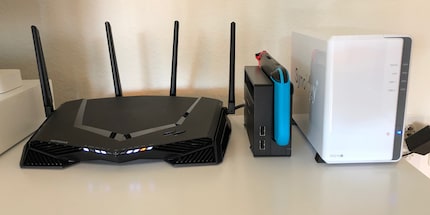
The router is quickly wired and set up. The first time I boot up, I can log in thanks to the preset SSID, password and username. I can find the information on the sticker on the underside of the router. Immediately after connecting, a browser window pops up to carry out the initial installation - it couldn't be more convenient. The installation wizard is simple and helps you to make all the important basic settings. If you want to tune your sled a little more, you can do so afterwards in the router's portal. However, I can't do much more than customise wireless channels and create routing and firewall rules, as the software is too restrictive for that.
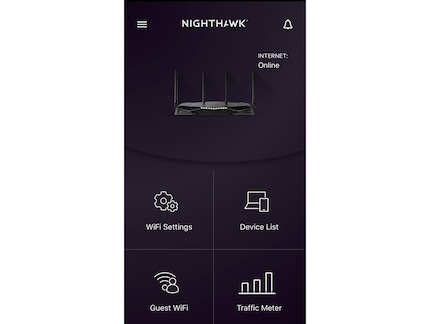
If you don't want to configure via the computer, you can also do everything via the smartphone app.
What the gaming router does
A special feature of the XR500 is that the two frequency bands 5 and 2.4 GHz are made available under one and the same SSID. This works quite well and brings advantages, especially as physically the lower frequency always has a wider range. This saves me the hassle of having to switch WLANs. However, I can also deactivate this feature if required. A bit daft, but not annoying in my case: unfortunately, my repeater can't keep up (due to its age) and only forwards the signal on one frequency band.
I have connected a Synology NAS, a Hue Bridge, a TV and the TV box directly to the router. Everything works as desired without any problems. The only good thing is that I don't have any additional devices, as there are no more than four RJ45 sockets.
I currently live in a 4.5-room flat on 110 m². The living room with router is relatively central. Surprisingly, the network signal is optimally distributed throughout all four walls. Even the 5 Ghz frequency band reaches the furthest room. And this is despite the fact that it has to cover a distance of ten metres through three concrete walls. In the furthest corner of the flat, I still get a good 100 to 140 Mbit/s of the 200 Mbit/s originally offered. A remarkable performance, in my opinion.
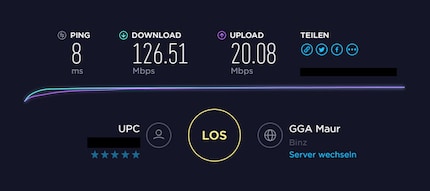
It's also great that the router provides sufficient bandwidth when there is a heavy load from multiple users thanks to MU-MIMO. If you own a lot of devices or want to boost your income with Airbnb guests, you won't want to miss out on this.
Additional values when gaming
Since this is a router for gamers, the question arises as to how the device differs from conventional routers.
What makes it so special is the special router operating system "DumaOS". This makes it possible to manage the router in a simple way. For example, you can use it to limit traffic from smartphones and the office notebook in order to give the gaming PC most of the bandwidth. The Bandwith Allocator can also be used to prioritise game packages to eliminate any lags.
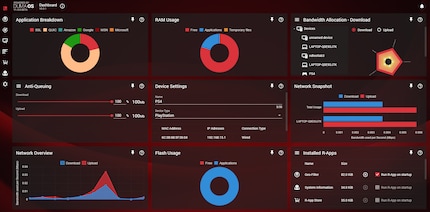
Practical dashboards that provide information on all kinds of things help with decision-making. From ping values and packet losses to bandwidth utilisation and much more. The nice thing is that these dashboards can be configured to my liking.
Geo filter for console gamers:
If I don't want to be connected to a certain region of the world in online games, the search radius for lobbies can also be restricted in DumaOS. Unfortunately, PC gamers cannot benefit from this cool feature (due to dedicated servers), which is a shame.
What added value does the speedy bolide offer?
The XR500 is really fast, covers an extremely large area thanks to its antennas and is easy to configure using a smartphone or PC. The built-in dual-core processor with 1.70 GHz provides excellent employees, even if it seems a little oversized for a router. This means that the XR500 really does run like a racing machine, but in the end it's all about the milliseconds that are gained. These are hardly noticeable in everyday use.
With a bandwidth of 200 Mbit/s, I'm perfectly happy at home. Everything runs smoothly without me having to make use of features such as traffic prioritisation or the bandwidth allocator. However, these could pay off for larger households or less fast internet access.
I'm a little disappointed with the physical connectivity, as the router only offers four Ethernet ports. I would have expected more for the price. Incidentally, there are no telephone connections. But since gamers have no use for them anyway, that's no big deal.
Is it worth buying the router?

Let me put it this way; the router does a great job. It has always been reliable and super fast in its function. It may be a dream come true for control freaks and network tuning enthusiasts in particular, as the setting options and dashboard views leave little to be desired. If the router is still running in three years' time (which is difficult to assume), I will be happy with the 300 francs I spent.
In a nutshell, I enjoy technology and being where the action is. So what better place for me than digitec?